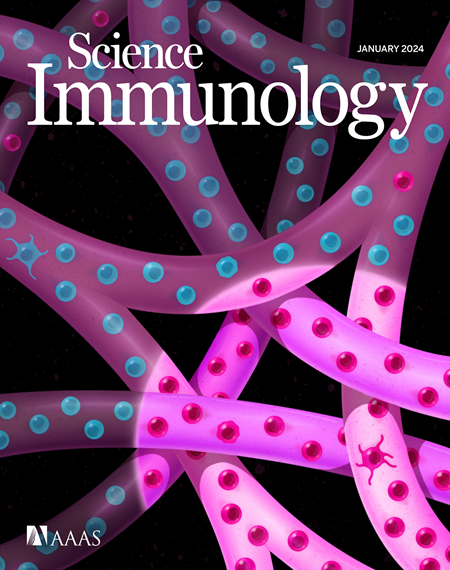Innate lymphoid cells originate from fetal liver–derived tissue-resident progenitors
IF 16.3
1区 医学
Q1 IMMUNOLOGY
引用次数: 0
Abstract
Committed progenitors with innate lymphoid cell (ILC) developmental potential are present in the fetus and bone marrow (BM). However, how fetal and BM hematopoiesis temporally and spatially contribute to ILC pools remains unclear. Here, we elucidated the distinct origins and developmental pathways of extramedullary and intramedullary ILCs in mice during ontogeny. ILC-restricted hematopoiesis is initiated in the fetal liver (FL), and then FL-derived PD-1+ ILC precursors (ILCPs) seed fetal lung and intestine. Organ niches determine the commitment of ILCPs to downstream precursors, including bipotent ILC1-ILC3 precursors (ILC1/3Ps), which preferentially reside in the liver and intestine, and ILC2 precursors (ILC2Ps), which are found predominantly in the lung. These precursors persist in adulthood and contribute to local ILC pools in a BM-independent manner. In contrast, intramedullary ILC2Ps and ILC2s rely on BM hematopoiesis. Thus, our study demonstrates that extramedullary and intramedullary ILCs have different origins and provides a comprehensive framework for ILC developmental dynamics.
先天淋巴样细胞起源于胎儿肝源性组织驻留祖细胞
具有先天淋巴样细胞(ILC)发育潜能的承诺祖细胞存在于胎儿和骨髓(BM)中。然而,胎儿和骨髓造血在时间和空间上如何促进ILC池仍不清楚。在这里,我们阐明了小鼠在个体发育过程中髓外和髓内ILCs的不同起源和发育途径。ILC限制性造血始于胎儿肝脏(FL),然后由FL衍生的PD-1 + ILC前体(ILCPs)在胎儿肺和肠道中产生。器官生态位决定了ILCPs对下游前体的承诺,包括优先存在于肝脏和肠道的双能性ILC1-ILC3前体(ILC1/3Ps)和主要存在于肺部的ILC2前体(ILC2Ps)。这些前体在成年期持续存在,并以与bm无关的方式形成当地的ILC池。相比之下,髓内ILC2Ps和ILC2s依赖于骨髓造血。因此,我们的研究表明,髓外和髓内ILC具有不同的起源,并为ILC的发育动力学提供了一个全面的框架。
本文章由计算机程序翻译,如有差异,请以英文原文为准。
求助全文
约1分钟内获得全文
求助全文
来源期刊

Science Immunology
Immunology and Microbiology-Immunology
CiteScore
32.90
自引率
2.00%
发文量
183
期刊介绍:
Science Immunology is a peer-reviewed journal that publishes original research articles in the field of immunology. The journal encourages the submission of research findings from all areas of immunology, including studies on innate and adaptive immunity, immune cell development and differentiation, immunogenomics, systems immunology, structural immunology, antigen presentation, immunometabolism, and mucosal immunology. Additionally, the journal covers research on immune contributions to health and disease, such as host defense, inflammation, cancer immunology, autoimmunity, allergy, transplantation, and immunodeficiency. Science Immunology maintains the same high-quality standard as other journals in the Science family and aims to facilitate understanding of the immune system by showcasing innovative advances in immunology research from all organisms and model systems, including humans.
 求助内容:
求助内容: 应助结果提醒方式:
应助结果提醒方式:


